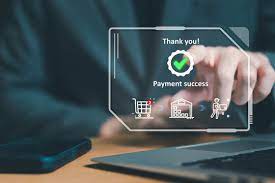Tips
Why Seamless Digital Payments Matter for Modern Platforms

Convenience is the new currency in today’s digital-first economy. From booking accommodation and streaming entertainment to playing games online, users expect it all to be faster, more intuitive, and uninterrupted. Of all these expectations, seamless digital payments are critical to customer satisfaction and, therefore, business growth.
A frictionless payment experience no longer works as an added benefit but is core to a platform’s design and brand identity. When transactions are seamless, users feel secure and valued, while frustrations at the point of purchase quickly translate into abandonment. For digital platforms today, mastering payments isn’t just about processing transactions; it’s about building trust, loyalty, and long-term engagement.
The Experience Economy and Instant Expectations
The rise of the experience economy shifted consumer expectations on a global scale. Customers are no longer buying just products or services; they’re buying moments: fast, personalized, and hassle-free. Payment systems have a central role in delivering that experience.
Research shows that checkout friction is among the most significant reasons for abandonment on a website. Long forms, slow loading, or limited payment options can immediately break a customer’s momentum. Conversely, streamlined systems with support for one-click payments or automated processing elevate satisfaction and conversion rates.
A frictionless payment journey can make a huge difference in retention and bottom-line results for businesses. In extremely competitive verticals, such as travel, e-commerce, and digital entertainment, even slight inefficiencies may lead to users moving to competitor platforms.
The modern consumer expects immediacy with each interaction-from the moment of login to receiving confirmation of payment. Platforms that deliver this experience of flow are winning trust and creating emotional connections that extend beyond the transaction itself.
The Power of Integration Across Industries
The strongest example of seamless payment innovation comes from the gaming and entertainment sector, where users demand instant gratification and absolute security. The ability to deposit, play, and withdraw funds within mere seconds has become a defining expectation.
Instant, secure payments across increasingly integrated platforms, like those used to play online blackjack or other interactive games, demonstrate what that integration can do with user experience. It’s not just about the thrill of the game; rather, it’s about reliability in a system that handles transactions effortlessly, so one can focus on the experience alone.
These lessons reach far beyond gaming. For instance, a variety of property rental sites have already started to adopt similar models, letting users pay deposits, rent, and utilities through automated and verified systems. The same is happening with freelance marketplaces, online education providers, and e-commerce platforms, which realize that seamless payments are just as crucial as great content or service quality.
By embedding payments right into the user journey, rather than treating it as a separate step, modern businesses create continuity that feels intuitive and natural. The result is not just efficiency-it’s loyalty.
Security as a Seamless Experience
While speed and simplicity drive the appeal of digital payments, security remains non-negotiable. The challenge for modern platforms is how they strike a balance between robust protection and frictionless usability.
Today’s leading payment processors strike this balance by implementing advanced encryption, tokenization, and AI-driven fraud detection that works subtly behind the scenes. Users will have peace of mind without the bother of frequent security prompts or extended verification steps.
This evolution in the field of payment technologies has made digital transactions even more secure than ever, even across borders. Systems like visa casinos demonstrate how global brands leverage multi-layered authentication while maintaining smooth, instant payments. These developments bring about transparency and reliability, two pillars defining trust in this digital world.
The same standards now apply across industries. Whether customers are booking co-working spaces, paying their rent online, or subscribing to some digital service, they expect invisible yet reliable protection. Security should feel built in, not bolted on.
The Impact on Business Efficiency and Growth
This means that for companies, frictionless payments are not just about user experience; they are about efficiency within the operation. Integrated systems minimize manual processing, reduce errors, and speed up cash flow. Automating transactions, invoices, and refunds ensures consistency and transparency.
This, in turn, translates to strategic advantages. It means that companies with an integrated payment infrastructure can expand into new markets, currencies, or business models without overhauling their core systems. At the same time, subscription-based services can include recurring billing, and marketplaces will be able to manage multi-party payouts in real time.
Seamless payment ecosystems create value through intelligent data generation. Each transaction lends insight into user behavior, preferences, and purchasing trends. When analyzed correctly, this helps businesses optimize pricing, personalize offers, and forecast trends with greater precision.
Smoothening payments ultimately reduces friction along the entire value chain, from gaining customers to retaining and creating brand advocates.
Payment Innovation for Inclusion
The digital economy only truly prospers when it is inclusive. Smooth payment systems are part of breaking down the barriers to access for users who lack traditional banking services or credit histories.
Other alternative means include prepaid cards, mobile wallets, and instant bank transfers, which include more people in online commerce. This inclusivity is of benefit to the users and the platforms: markets are grown and customer bases diversified.
For any business with global ambitions, support for multiple payment options can no longer be optional. One user in one country might be partial to a mobile wallet; another may depend upon a debit or prepaid solution. Recognizing these differences builds credibility and widens reach.
Seamless payments are more than just a convenience; they serve as connections in the financial ecosystem, bringing people and platforms together across a variety of borders and socioeconomic levels.
Trust through Consistency
The foundational principle of smooth digital payments is consistency. As users gain trust from experiences where they know, regardless of where they are (and what digital payment they are using), the process has been the same and has done what it promised; their trust level increases.
They become less involved with whether or not it will go through and whether or not their data will be safe in a secure payment process.
Today’s consumers scrutinize payment processing that feels clunky or inconsistent. Even a quick, clunky payment processing experience can overshadow a great experience three months prior. For this reason, high-performing companies heavily invest in perfecting each payment journey – design, speed of processing, and confirmation notification.
Case in point, property and real estate management platforms now offer one-click rent payments and automatic receipts. Features like this lessen anxiety for tenants and landlords and establish lasting impressions of professionalism and efficiency.
Trust in eCommerce is not built by promises alone, but rather from consistency and seamless execution at every step.
The Future of Digital Transactions
The next phase in frictionless payment, given advancements in technology, will likely be invisible transactions, or payments occurring seamlessly in the background. Subscriptions that auto-renew, recurring donations, and automatic settlement are some types of payments already heading in that direction.
Artificial intelligence and blockchain will enhance our ability to provide transparent security, and biometrics will enable even faster and more organic authentication of identity. While many possibilities await us, the enemy in business will be implementing these innovations in a way that loses the human experience.
With the personalization of payments, convenience must always have a personal feeling, and automation must emphasize empathy, not just efficiency.
Conclusion
In a digital era characterized by immediacy and choice, frictionless payments represent more than a technology upgrade; they are a competitive edge. They influence users’ perceptions of brands, affect how long they stay engaged, and dictate how often they come back.
Whether in online gaming, property, or global e-commerce, the message is simple: the more frictionless the payment process becomes, the more a relationship can be fostered between users and platforms.
At the end of the day, the future of digital business will belong to those who recognize that every successful transaction is not merely a payment; it’s a moment of trust.




